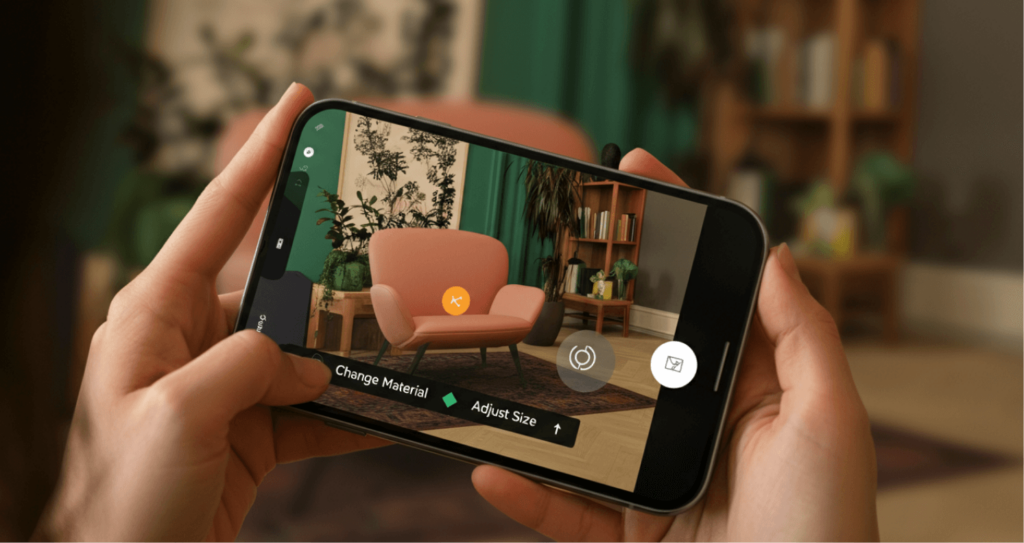Introduction
In recent years, augmented reality products have evolved from experimental technology to powerful business solutions. Companies are leveraging AR technology to create immersive experiences, improve customer engagement, and bridge the gap between the physical world and the digital environment.
With RealityMAX, businesses can develop augmented reality applications that let users visualize products in their real-world environment, interact with virtual objects, and make more informed purchasing decisions.
In this article, we explore 7 groundbreaking augmented reality products that companies can implement today to enhance marketing, e-commerce, and product visualization.
1. Immersive 3D product visualization
Bringing augmented reality products to life
One of the biggest limitations of online shopping and product research is the inability to physically interact with items before purchasing. Customers often rely on static images and videos, which don’t always provide enough information about a product’s size, texture, or design details. This uncertainty leads to lower conversion rates, hesitation, and increased return rates.
With RealityMAX’s augmented reality technology, businesses can bridge the gap between the digital and physical world by allowing customers to experience products in 3D before making a decision. Instead of relying on guesswork, shoppers can now rotate, zoom, and explore products in a real-life setting using AR-powered visualization.
How it works
- Users scan a QR code or click an AR-enabled link, opening a 3D model of the product on their mobile phone screen.
- They can zoom in, rotate, and move the product around, examining every angle in detail.
- The augmented reality experience provides a real-world scale and spatial understanding before purchase.
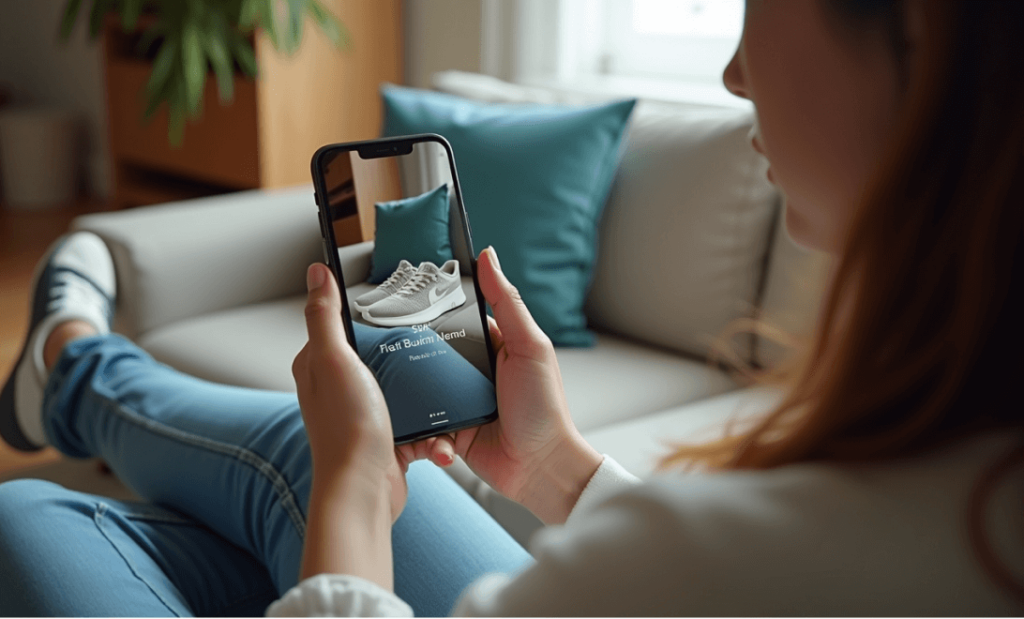
Industries benefiting from AR product visualization
📌 E-commerce & retail – Customers explore augmented reality products before committing to a purchase.
📌 Furniture & home decor – Shoppers place virtual objects in their homes to check how they fit.
📌 Automotive industry – Buyers interact with AR-powered vehicle previews, experiencing car interiors before visiting a dealership.
Why AR product visualization matters
✅ Increases customer confidence, making online shopping more immersive.
✅ Reduces uncertainty, leading to fewer product returns.
✅ Enhances the overall shopping experience, making it more interactive and engaging.
✅ Provides a seamless bridge between the digital and physical worlds, improving decision-making.
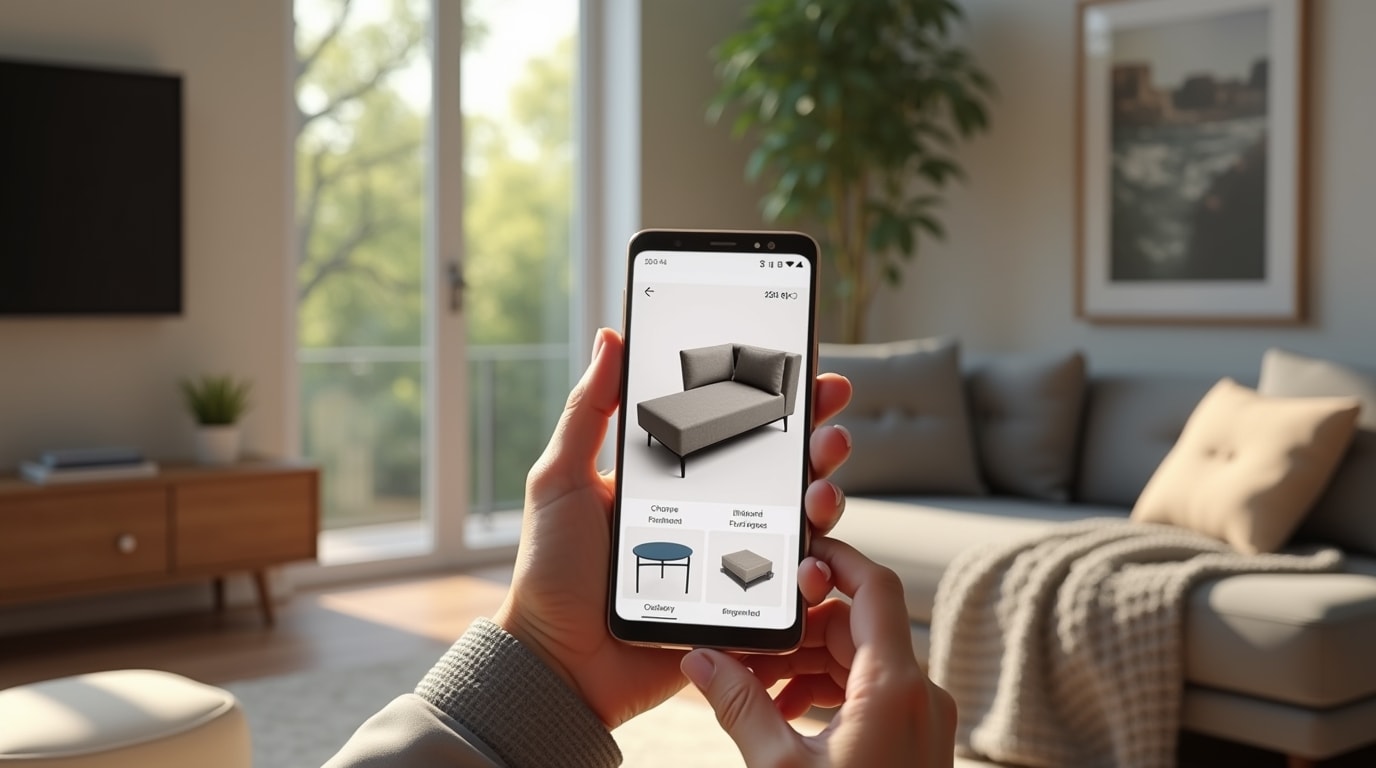
2. AR-powered product placement
Helping customers visualize products in their real-world environment
Buying furniture, appliances, or home decor online can be a gamble—customers often wonder:
- Will this couch fit in my living room?
- Does this lamp match my space?
- Will this coffee table be too small for my area?
Without seeing the product in context, shoppers hesitate. This results in lower conversions and higher return rates.
With RealityMAX’s AR-powered product placement, customers can virtually place products in their physical world using augmented reality. This eliminates guesswork, allowing consumers to adjust placement, size, and orientation before purchasing.
How AR-powered product placement works
- Users scan a QR code to see a life-sized 3D model of a product.
- They position, move, and rotate the item using their smartphone camera.
- Customers can visualize how the product fits in their space in real time.

Industries leveraging AR-powered placement
📌 Furniture & home decor – Shoppers use AR capabilities to preview couches, lamps, and tables in their homes.
📌 Consumer electronics – Buyers check how TVs, gaming consoles, and speakers fit into their space.
📌 Retail industry – Brands integrate AR visualization to allow customers to preview products before visiting a store.
Why AR product placement is a game-changer
✅ Allows customers to see real-world scale and context, leading to more confident purchases.
✅ Reduces returns, as customers know exactly how products will fit before buying.
✅ Enhances the customer journey, making online shopping more interactive.
✅ Increases customer engagement, keeping users on product pages longer.
3. Interactive product configurators
Customizing products in a digital environment before visualization
Consumers today want personalization. Whether it’s customizing a car, choosing furniture materials, or selecting an electronic device’s specifications, shoppers want control over their choices. However, most online stores offer static product images, making it hard for customers to visualize how different options will look in real life.
With RealityMAX’s interactive 3D product configurators, businesses can allow customers to modify product materials, colors, and features inside the app before switching to AR mode for final visualization. This combination of 3D interactivity and AR placement provides the ultimate product customization experience.
How it works
- Users enter in RealityMAX and select a base product from a brand’s catalog.
- They modify textures, colors, and finishes in real-time, exploring different configurations.
- Once the design is finalized, they switch to AR mode to visualize the customized product in a real-world environment.
- Customers can compare multiple variations before making a final decision.

Industries benefiting from interactive 3D configurators
📌 Furniture & home decor – Shoppers personalize sofas, tables, and wardrobes by selecting different materials, finishes, and colors.
📌 Automotive industry – Buyers configure car interiors and exteriors, choosing different body colors, trims, and wheel designs before seeing them in AR.
📌 Consumer electronics – Customers modify gadgets by selecting different sizes, colorways, and hardware specifications.
Why businesses should adopt 3D configurators
✅ Increases engagement, as customers spend more time interacting with products.
✅ Reduces buyer hesitation, helping customers feel more confident in their purchases.
✅ Enhances personalization, leading to higher conversion rates.
✅ Combines the power of AR and 3D interactivity, offering a unique shopping experience.
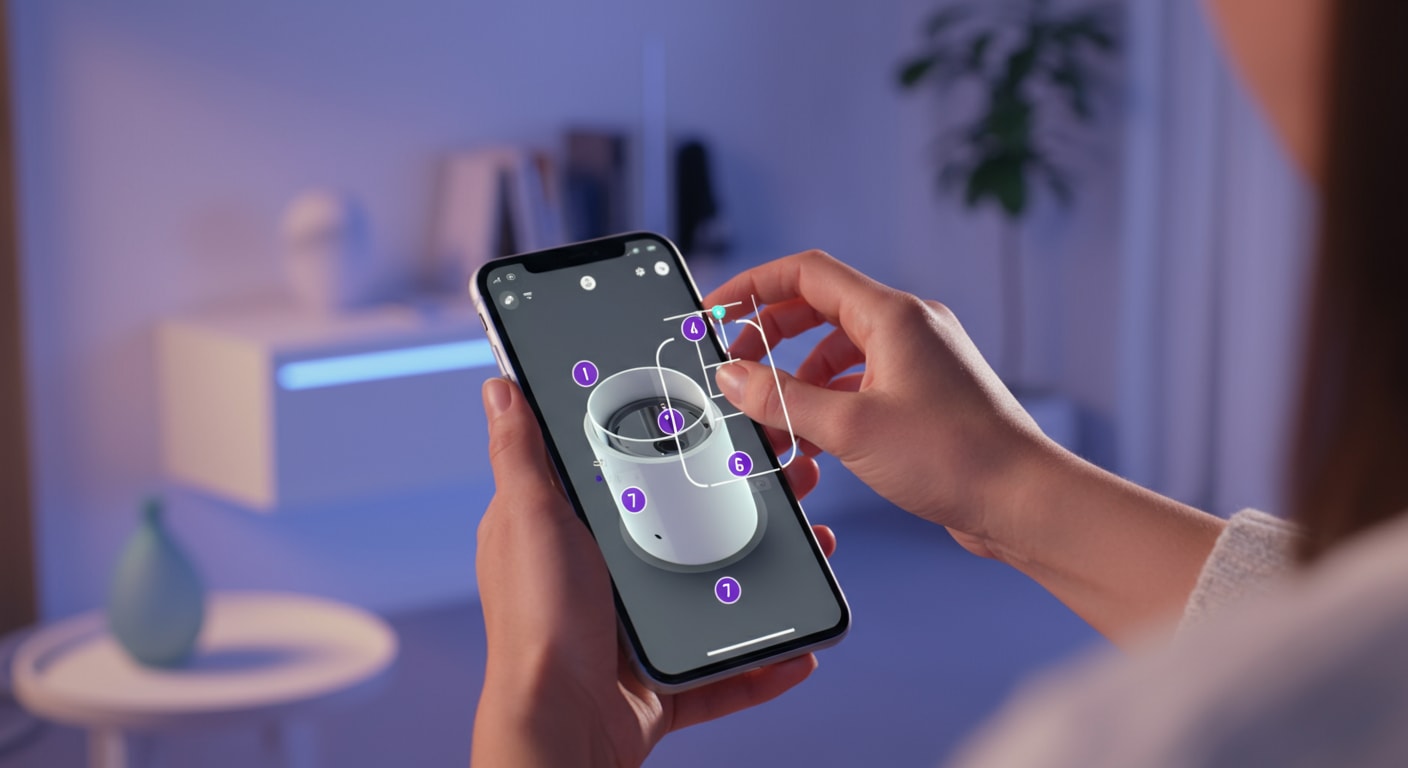
4. AR-enhanced marketing campaigns
Transforming advertising with augmented reality experiences
In today’s fast-paced digital landscape, traditional marketing techniques are no longer enough to capture consumer attention. Augmented reality marketing campaigns offer a game-changing approach by making advertisements interactive, immersive, and highly engaging. Instead of just showing an ad, brands can now invite customers to experience products firsthand using AR technology.
With RealityMAX, businesses can create AR-powered marketing campaigns that integrate augmented reality features into packaging, billboards, social media, and in-store promotions—generating social media buzz and stronger customer connections.
How brands use AR-powered marketing
- QR Code marketing campaigns – Customers scan a QR code on a product, poster, or ad to unlock a 3D AR experience. This can be an interactive product demo, a gamified experience, or a branded filter.
- Augmented reality social media ads – Brands use AR-powered filters and lenses on platforms like Instagram, TikTok, and Snapchat, allowing consumers to interact with virtual objects, try on makeup products, or preview accessories in AR.
- Retail activations and in-store experiences – Stores incorporate AR displays and virtual objects to showcase products interactively, creating a more immersive shopping journey.

Industries benefiting from AR marketing campaigns
📌 Beauty & fashion – Virtual try-on tools let customers test makeup products and clothing styles before purchasing.
📌 Retail industry – Brands use augmented reality experiences to enhance in-store and e-commerce engagement.
📌 Food & beverage – Companies create interactive AR labels that tell a product’s story when scanned.
📌 Entertainment & events – AR experiences add interactive layers to concerts, sports events, and product launches.
Why AR marketing works
✅ Boosts customer engagement – Augmented reality campaigns encourage consumers to interact, making them more likely to remember a brand.
✅ Increases social media buzz – Users share AR experiences on social media, amplifying organic reach and brand awareness.
✅ Improves the customer journey – AR helps consumers make more informed decisions, leading to higher conversions.
✅ Bridges the gap between digital and physical worlds – Brands can merge real-life experiences with digital information for a seamless shopping experience.
5. Real-time 3D collaboration for design teams
Streamlining workflows with augmented reality technology
The traditional product design process often involves time-consuming revisions, physical prototypes, and costly iterations. Augmented reality technology is transforming how design teams collaborate, making product development faster, more efficient, and more interactive.
With RealityMAX, teams of designers, engineers, and stakeholders can work together in a shared 3D workspace, refining products in real time without the limitations of physical location. This real-time collaboration eliminates delays and miscommunication, ensuring that every team member stays aligned from concept to final production.
How AR collaboration benefits businesses
- Teams work on the same 3D model simultaneously – Whether in the same office or across different locations, all stakeholders can view, edit, and refine designs in real time.
- Augmented reality applications allow instant visualization – Instead of waiting for physical prototypes, teams can preview life-sized digital models to make quick decisions.
- Reduces the need for in-person meetings – AR collaboration tools let teams review product designs remotely, cutting down on travel and logistics costs.
- Eliminates costly mistakes – By making adjustments early in the design phase, businesses reduce errors before production begins.
Industries benefiting from AR-powered collaboration
📌 Industrial design & manufacturing – Engineers and designers test product functionality before mass production.
📌 Architecture & construction – Teams review augmented reality models of buildings and blueprints in real-time.
📌 Automotive industry – AR is used to visualize and refine vehicle designs before building physical prototypes.
📌 Retail product development – Companies collaborate on fashion, footwear, and home decor designs using augmented reality applications.
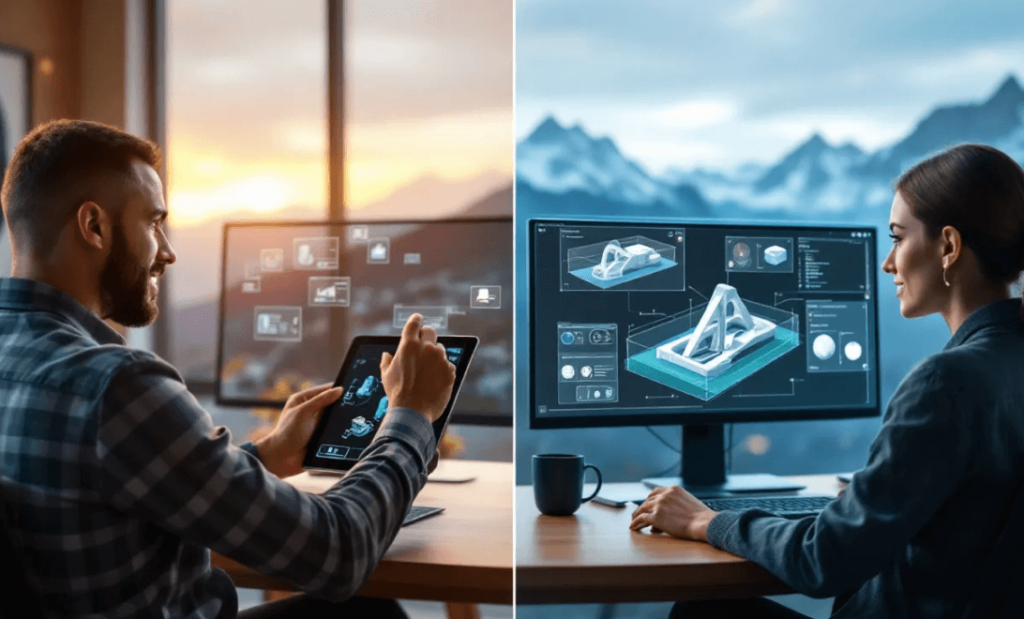
Why AR collaboration is essential for modern businesses
✅ Speeds up development cycles – Teams can iterate faster by eliminating long feedback loops.
✅ Reduces production costs – Businesses cut expenses by reducing reliance on physical prototypes and rework.
✅ Enhances communication and teamwork – Real-time visualization keeps everyone on the same page, improving efficiency.
✅ Supports remote and hybrid teams – AR-powered collaboration allows global teams to work together without geographic limitations.6. Immersive AR product presentations for trade shows
Engaging audiences with augmented reality products
At trade shows, corporate events, and industry expos, businesses need to capture attention quickly and stand out from competitors. Traditional booth displays, posters, and physical product models are no longer enough to impress potential clients. This is where augmented reality technology takes product presentations to the next level.
With RealityMAX, companies can showcase interactive augmented reality products in a way that engages, educates, and persuades their audience. Instead of relying on static displays, businesses can let visitors experience 3D interactive product demos in AR, providing a more immersive and memorable experience.
How AR product presentations work at trade shows
- Visitors scan a QR code using their smartphone camera to instantly access a fully interactive 3D product model.
- They can rotate, zoom, and explore features of the product in real-time, without needing physical interaction.
- Businesses use AR displays to break down complex product features, showing how a product functions in different scenarios.
- Augmented reality experiences allow potential buyers to interact with virtual objects before speaking to a salesperson.
- Companies can create custom AR marketing campaigns to gamify experiences, increasing engagement and time spent at their booth.
Industries benefiting from AR trade show presentations
🔹 Automotive industry – Car manufacturers display 3D AR models of their latest vehicles, allowing customers to explore interior and exterior details interactively.
🔹 Retail & consumer goods – Brands can showcase virtual product demonstrations without bringing bulky inventory.
🔹 Technology & electronics – Companies use augmented reality applications to highlight device features, circuit breakdowns, and product functionality.
🔹 Medical & pharmaceutical industry – Medical device manufacturers use AR simulations to demonstrate complex surgical tools and human body models.
Why AR product presentations are game-changers
✅ Attracts more visitors – Interactive AR displays draw people in, making your booth a key attraction at trade shows.
✅ Enhances product demonstrations – Show every detail of a product without needing physical samples.
✅ Improves engagement and brand recall – Visitors spend more time at booths with interactive AR experiences, making your brand more memorable.
✅ Simplifies complex information – AR visually explains intricate product features, making them easier to understand.
✅ Drives higher conversions – The immersive nature of AR presentations encourages potential buyers to take action faster.
7. AR-powered training and product education
Revolutionizing learning with augmented reality experiences
Traditional training programs rely on manuals, videos, and in-person sessions, which are often time-consuming, expensive, and ineffective. Augmented reality technology is transforming the way employees, customers, and students learn by bringing education to life with interactive 3D models and real-world simulations.
With RealityMAX, businesses can develop AR training programs that allow users to engage with virtual objects in real-time, offering a hands-on learning experience without the need for physical resources.
How AR-powered training works
- Employees or trainees use AR devices or their smartphone camera to access 3D models and training simulations.
- Interactive AR experiences allow learners to explore product mechanics, assembly instructions, or procedural workflows.
- Businesses create step-by-step AR tutorials to guide users through complex tasks, improving retention and comprehension.
- Augmented reality applications reduce reliance on traditional learning materials, offering an immersive, practical approach to training.
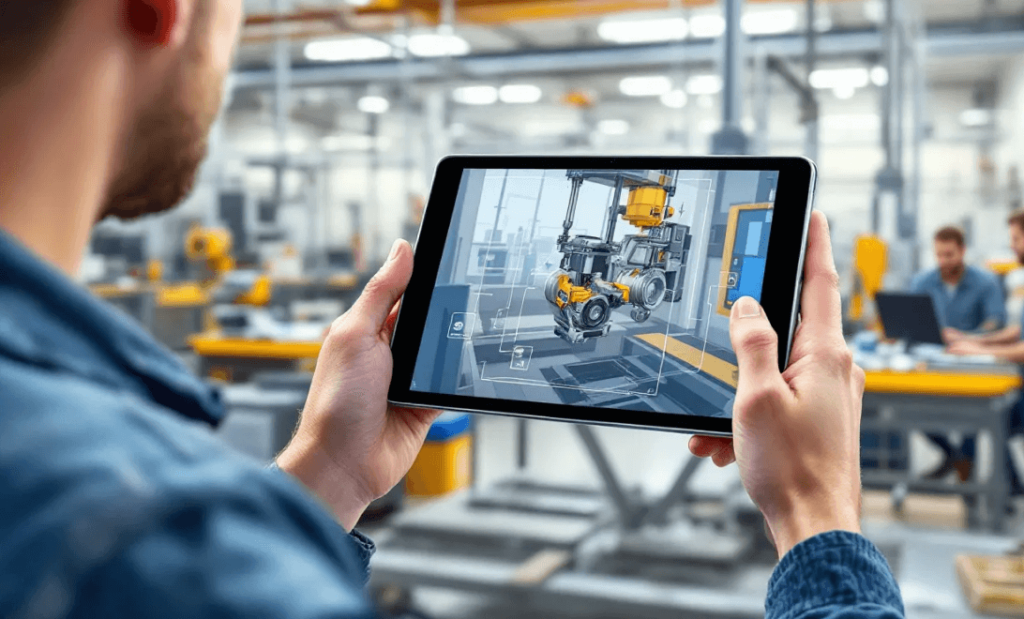
Industries benefiting from AR training & education
📌 Medical students & healthcare professionals – AR-powered human body models allow students to explore organs, muscles, and surgical procedures in 3D without needing cadavers.
📌 Retail industry employees – Staff members can use augmented reality applications to practice customer interactions, product stocking, and sales techniques before working on the floor.
📌 Industrial workers & technicians – AR simulations train employees on operating heavy machinery, handling safety protocols, and assembling equipment.
📌 Consumer electronics & home appliances – AR-based virtual user manuals provide customers with step-by-step instructions for setting up and troubleshooting products.
Why AR-powered training is the future of education
✅ Reduces training costs and time – Employees and trainees can learn faster with AR-based experiences, cutting down on-site training expenses.
✅ Improves knowledge retention – Studies show that learning through AR simulations helps people remember concepts more effectively than reading manuals.
✅ Makes training interactive & engaging – Employees and customers actively participate in the learning process, making it more effective.
✅ Increases accessibility – AR-based training is remote-friendly, allowing employees to learn from anywhere in the world.
✅ Minimizes risk in hazardous industries – Workers can practice high-risk procedures in AR before handling real-world machinery.
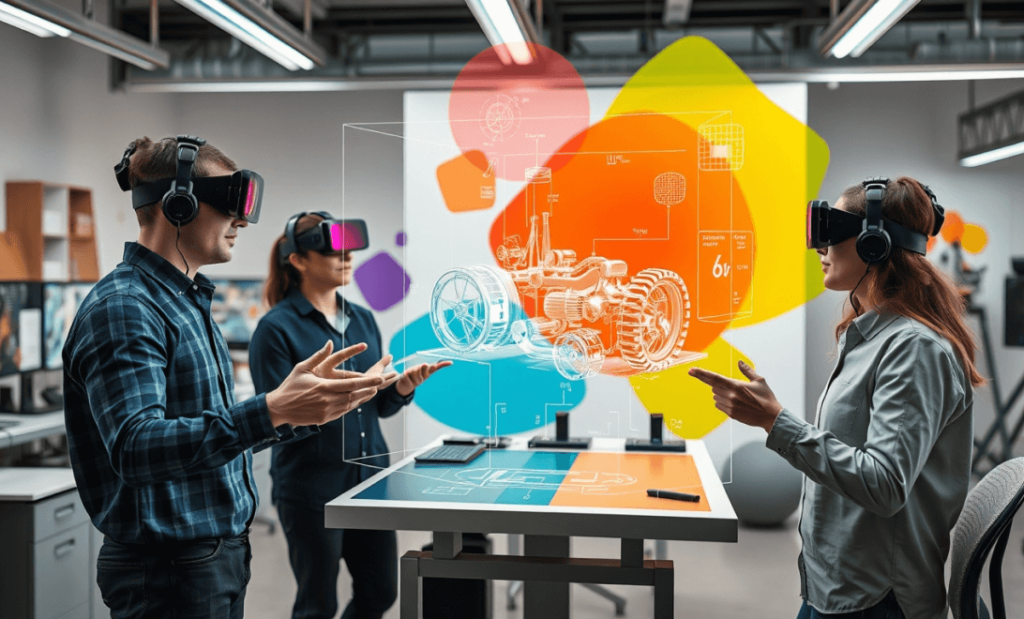
The future of AR with RealityMAX
The applications of augmented reality technology are limitless, and with RealityMAX, businesses can effortlessly integrate AR into their products, marketing, and operations.
Whether you’re in retail, education, real estate, or product design, RealityMAX’s AR capabilities provide powerful tools to engage customers, streamline workflows, and bridge the gap between the physical and digital world.
Get started with RealityMAX today
If you’re ready to take your business to the next level with augmented reality, RealityMAX is the ultimate 3D collaboration platform to make it happen.
📌 Explore the possibilities today! Login in RealityMAX and start building your own immersive AR experiences.
Final thoughts
Augmented reality products are no longer just a futuristic concept—they are a practical tool that businesses can leverage today. With RealityMAX, companies can create interactive, immersive, and engaging AR solutions that enhance the customer journey, improve training and education, and redefine marketing strategies.
Embrace the future of AR technology and unlock new opportunities with RealityMAX.
